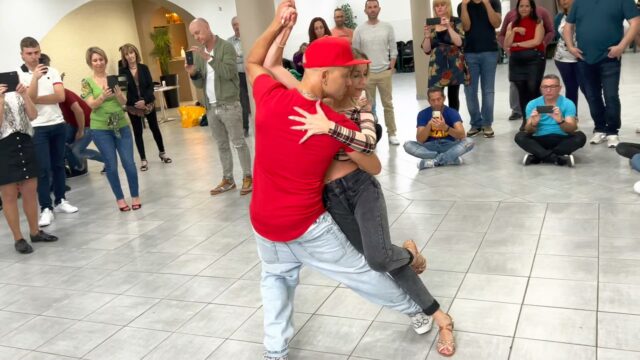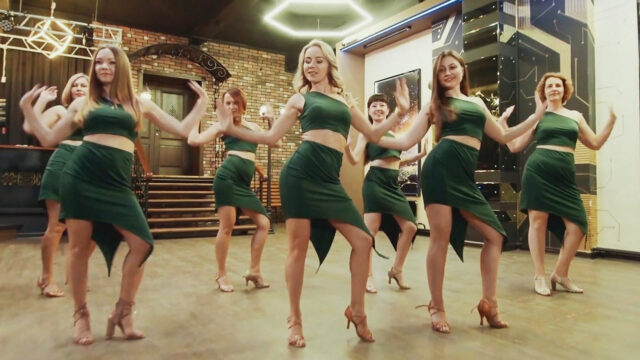Kizomba, a popular dance style originating from Angola, has gained significant popularity worldwide. Known for its smooth movements, sensuality, and connection between partners, it offers a unique dance experience. One common question that arises among those interested in learning Kizomba is whether a partner is necessary. The short answer is no, however in this article, we will explore the answer to this question in more details and shed light on the various aspects of learning to dance, both with and without a partner.

For a captivating visual representation of the various ways to dance Kizomba, we invite you to check out the video from Estúdio Sabor & Dança based in Portugal. In this video, three couples showcase their skills while dancing near a picturesque port. They transition between dancing solo (women only, men only) and as couples which serves as a fantastic example of the limitless possibilities and expressions within this captivating dance style.
- Kizomba Meets Tango: Ben & Ana’s Masterful Workshop Demo
- Sara Lopez & Ivo Vieira: Captivating Kizomba to African Woman
- How Difficult is Kizomba to Learn?
Partnered Nature of Kizomba: It is primarily a partner dance. It emphasizes the connection and communication between two dancers as they move harmoniously to the rhythm of the music. The lead and follow roles are central to Kizomba, with the lead guiding the movements and the follow responding to the lead’s cues. The synergy and understanding between partners are integral to the beauty and grace of the dance.
Learning with a Partner: Having a partner to learn Kizomba can be advantageous for several reasons. Firstly, practicing with a consistent partner allows for a deeper understanding of the dance dynamics, body movements, and connection. It fosters a sense of trust, familiarity, and synchronization, which can enhance the overall dance experience. Additionally, learning with a partner provides opportunities for exploration, experimentation, and refinement of techniques through continuous practice.
Benefits of Learning Solo: While learning Kizomba with a partner has its advantages, it is entirely possible to start learning the dance on your own. Learning solo can help you develop a strong foundation in fundamental steps, body movements, and musicality. Solo practice allows you to focus on your own body awareness, balance, and coordination, which are essential aspects of Kizomba. Moreover, practicing alone enables you to explore your own style, creativity, and expression within the dance.
Finding a Dance Partner: If you are keen on learning Kizomba but don’t have a partner, fret not. The majority of people who attend social dance classes, such as Kizomba, come without a partner. These classes often incorporate partner rotation, where participants frequently switch partners during the session. This ensures that everyone has numerous opportunities to work solo or dance with multiple partners throughout the class. By engaging in social dancing events, workshops, and online platforms, you can easily meet like-minded individuals who share your passion for this dance. Not only it provides a chance to find partners, but it also exposes you to diverse styles, techniques, and experiences, enriching your Kizomba journey.
Importance of Partner Work: Although you can begin learning Kizomba without a partner, it is important to eventually incorporate partner work into your practice. Partnered practice enhances your ability to communicate through movement, adapt to different dance styles, and develop the responsiveness required for a seamless dance connection. It is through partnering that you can truly experience the essence and beauty of Kizomba.
In conclusion, while it is not necessary to have a partner to start learning Kizomba, having a consistent partner can enhance your understanding, connection, and growth in the dance. Solo practice is beneficial for building foundational skills, body awareness, and musicality. Ultimately, Kizomba is a dance that thrives on the partnership and connection between two individuals. So, whether you start solo or with a partner, the journey of learning to dance promises an enchanting experience filled with rhythm, grace, and sensuality.
If you enjoyed our today’s video, you are more than welcome to share it with your friends and let them know what you think about it. Also, consider checking out our most recent posts and stay in touch. Cheers!





